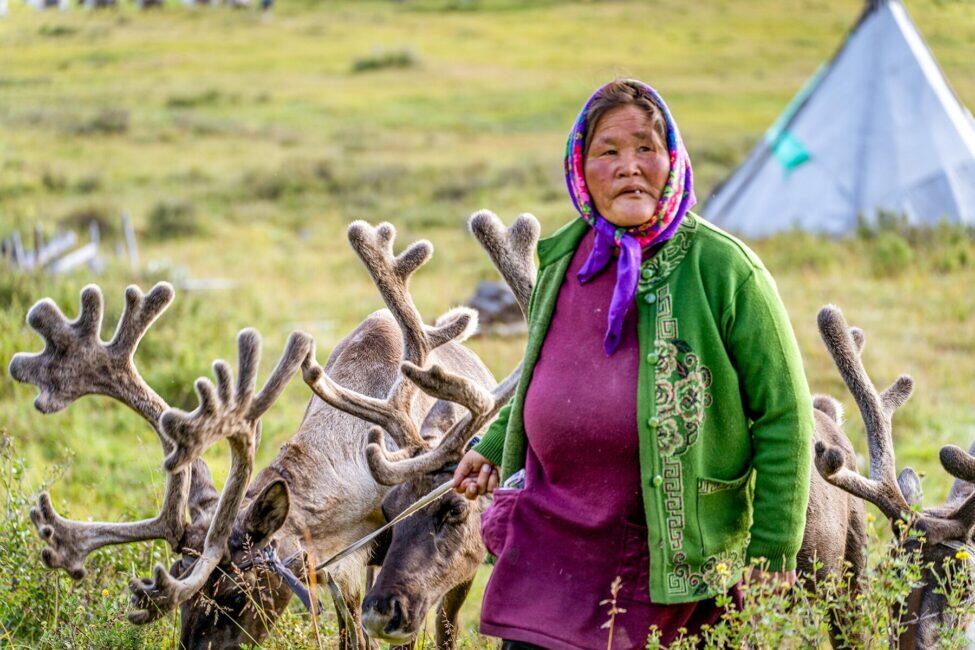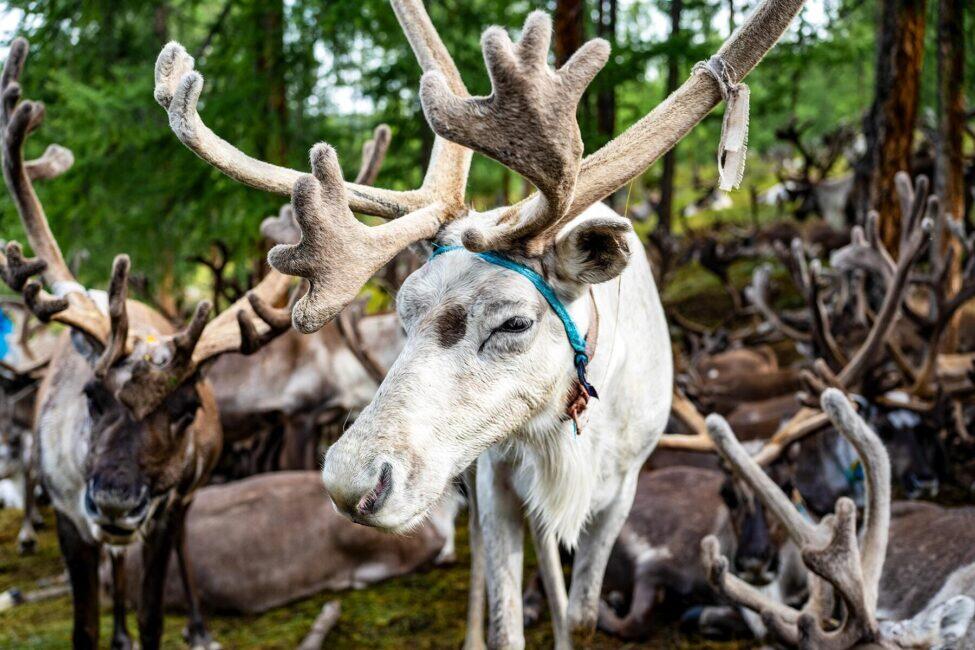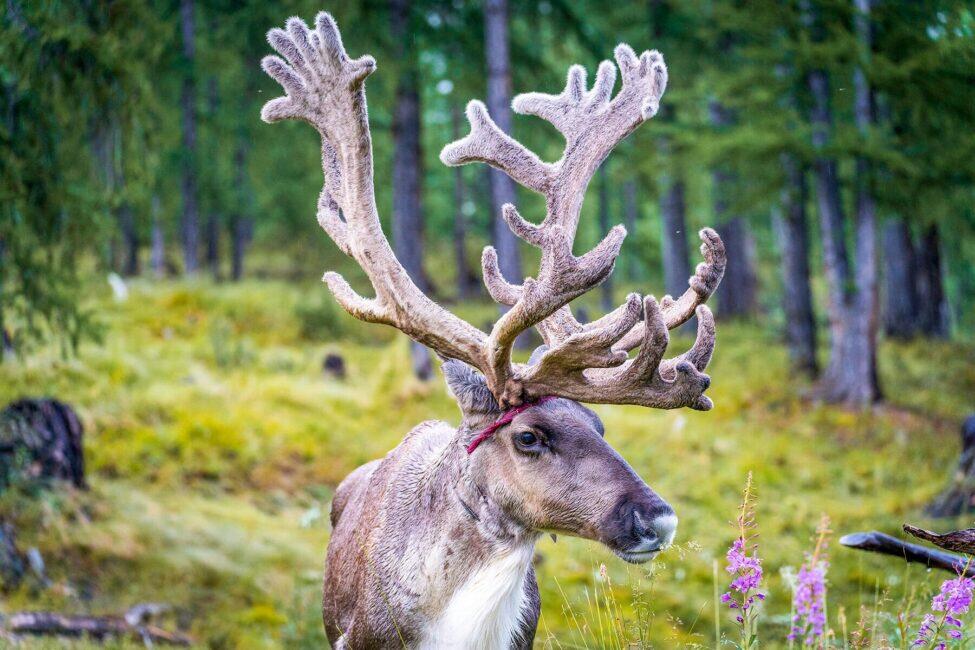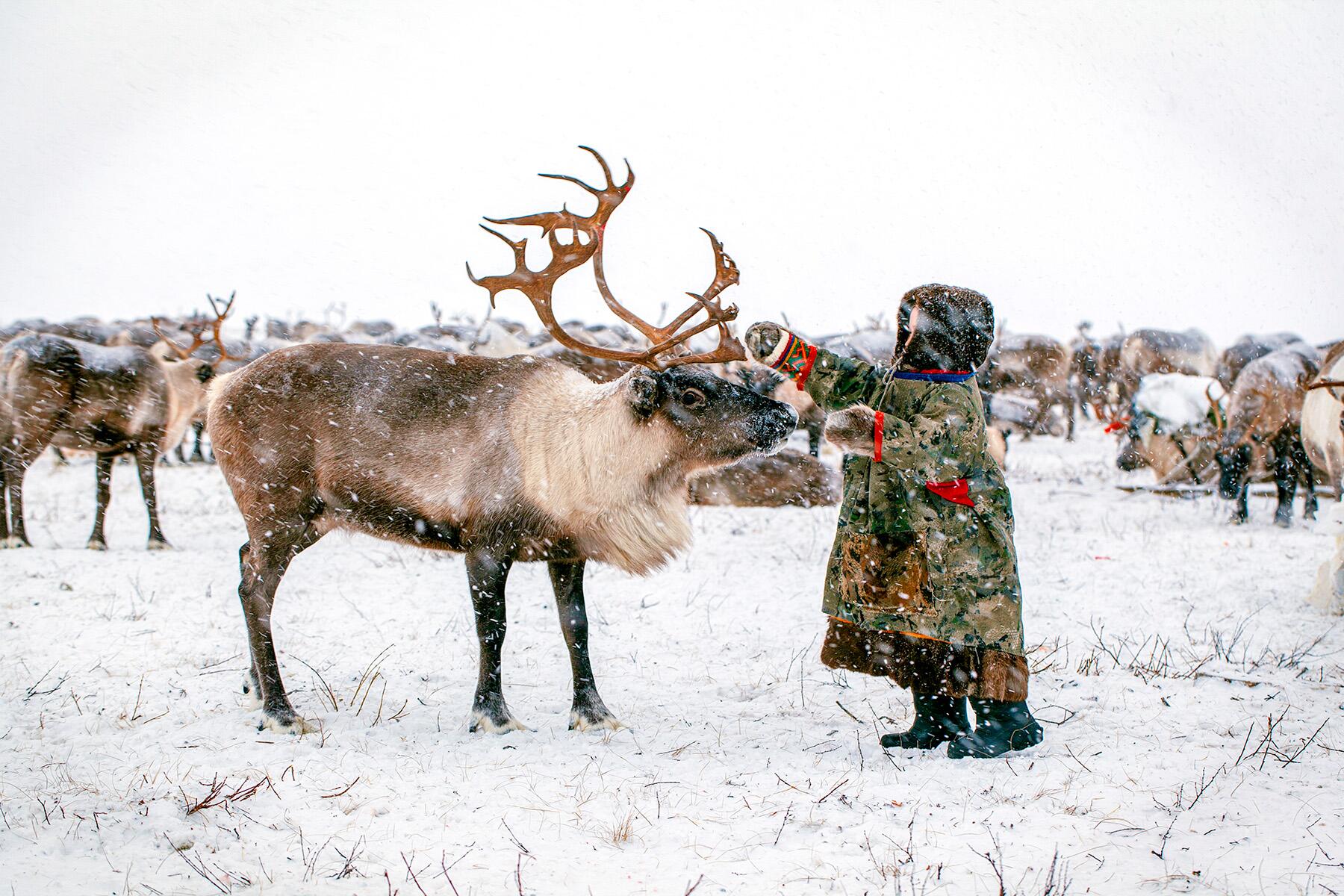Santa Claus: the original Siberian reindeer shaman.
At its heart, Christmas is technically a religious holiday, but it’s a childhood favorite because of the fanciful stories and colorful festive traditions. Traditions that have been passed down through the generations and across the continents. But many of these customs overlap with other globally celebrated holidays like the pagan holiday of Winter Solstice and Germanic Yule.
Folklore, songs, poetry, and legend are some of the most common oral traditions passed from generation to generation. The origins of these stories are sadly often lost to time, but these tales all stem from somewhere. The story of Santa Claus supposedly appears out of thin air, ripped from the imagination of an anonymous author in the early 1800s. The poem titled “A Visit from St. Nicholas,” published in the Troy Sentinel, was later adapted to become the present-day “T’was The Night Before Christmas” story. Reindeer, rooftop Santa, presents, and all. This poem is credited with creating the Santa Claus children know and love today. But these fantastical ideas closely resemble many traditions and customs of ancient Siberian peoples spread across the Arctic Circle.
Recommended Fodor’s Video
It’s not so far-fetched to believe that Arctic shaman could be the culprit behind old Saint Nick. After all, what better place to stick the North Pole? Where else would Santa Claus be seen dressed in fur from head to toe? Not to mention the herds of velvety reindeer.

The Reindeer Herders of Siberia
The Tsaatan people of Mongolia are just one of many tribes inhabiting the desolate and difficult landscapes of the far north. Specifically, they live in the taiga biome. Thick Siberian coniferous forests spanning the borders of Mongolia and Russia open up to soggy, pock-marked marshland. In the coldest months, feet of snowpack cover the grasslands, and the temperatures drop to 60 degrees below zero. A handful of these isolated nomadic populations still eke out a living from the land. The Tsaatan, which translates to “people with reindeer” in Mongolian, along with the Sami of Finnish Lapland and the Koryaks of Russia, do so with massive herds of domesticated caribou. Or reindeer, as they are locally called.
All these tribes from Finland to Russia likely stem from the same ancestors who also relied on the heartiness of the Siberian reindeer. The tribes were all at one time nomadic. Some of them, like the Tsaatan, still are to this day. They use reindeer for transport, milk, cheese, fur, and at the end of the long reindeer life, meat. The tribes share culture and customs from across the continent and practice shamanism like their ancestors before them.
The shamanic practices of these Siberian reindeer tribes are where we might find the origins of today’s Christmas traditions.
The Fly Agaric Mushroom
Shamans often perform healing rituals for the tribal members. While these rituals are performed year-round, they peak around the winter solstice, December 21. To make matters more festive, historically, these rituals involved some kind of intoxicant to help the shaman connect with the spirit world above, the underworld below, and the world we inhabit.
More often than not, this intoxicant would be the fly agaric mushroom: the iconic red-capped fungi of modern pop culture. You’ve definitely seen the red button top with white spots. They are the same ones that make Mario grow in the Mushroom Kingdom. Fly agaric mushrooms are not the same as psilocybin, or “magic,” mushrooms. But this mind-altering mushroom grows on every single continent aside from Antarctica, peaking in prominence around the time of the winter solstice.
These red and white fungi happen to grow predominately in fertile soil under the bushy bows of fir and spruce trees. In fact, the mushrooms have a symbiotic relationship with the trees and cannot grow without their thirsty root system. But you cannot just pluck a fly agaric mushroom from the ground and chomp away. The fungi are extraordinarily toxic. Instead, the shaman of the Arctic learned to dry them before consumption.

A Shaman Santa Claus
Picture this: The jolly Arctic shaman sets out in his sled, perhaps pulled by a few of the reindeer they so often ride. He gathers a sackful of mushrooms and returns to his ger to hang them out to dry. The fly agaric mushroom is toxic when eaten raw. To help detoxify the potent mushrooms he has plucked and make them slightly more palatable, he dries the slimy fungi in socks over the fire–the stockings were hung by the chimney with care.
Or, for a less palatable high, he could simply ingest the urine of his most prized reindeer. Reindeer just so happen to love the mushrooms and scout out the red caps for themselves even beneath feet of powdery snow.
In the harsh climate of the Arctic Circle, deep snow often completely obscures the door of the traditional ger tents of the tribes. This leaves the shaman with one potential access point to reach his fellow tribesmen. And then, in a twinkling, I heard on the roof, The prancing and pawing of each little hoof. With his bag full of fly agaric, the shaman would visit neighbors by shimmying through the ubiquitous circular chimney hole in their tents. While the shaman isn’t delivering any physical gifts typically (though he could be bringing lifesaving food in particularly harsh winters), he is here to bring the gift of spiritual knowledge. All that’s left to do is eat the fungi and let the mushroom work its Christmas magic.
One of the most common symptoms of intoxication by the fly agaric mushroom is lilliputian hallucinations. In layman’s terms, visions of miniature people or animals with high voices–Elves, if you will. These hallucinations are usually in technicolor and cause a full rosy-cheeked flush and jolly laughter in anyone who ingests the mushroom. Joyful, jumping reindeer frolicking around outside could easily be perceived as flying by anyone under the influence of even a mild hallucinogenic, and the fly agaric is decidedly not mild.
Today, our Santa Claus apparel even matches the mushroom itself. Many cultures around the globe still hang mushrooms alongside their popcorn and garland strands for traditional winter solstice celebrations like Germanic Yule. And while the tale of the psychedelic reindeer shaman of the North may have been made more child-friendly as the story crossed continents and lifetimes, the parallels between the two are undeniable.
The Problem With a Psychedelic Christmas
After visiting the Tsaatan Tribe in Mongolia myself, there are some obvious problems with this whimsical Christmas origin story. For starters, there is little to no evidence of this white and red traditional garb, but that could be more of a regional attire more popular with the Nordic descendants in Finland. Another issue is that reindeer aren’t typically harnessed to a sleigh. Rather, reindeer are usually ridden. Lastly, and perhaps the most important fatal flaw, the Tsaatan people don’t use mushrooms in their shaman ceremonies today. But they do utilize alcohol, which is likely just the more readily available intoxicant in this modern era. Regardless, the shaman is usually a woman–not a bearded jolly man.
We may never know the exact origin of our most beloved childhood fable. Did it come from one man’s very fanciful imagination while writing Christmas poetry for his children? Or did it stem from millennia-old traditions of the North, passed down through the generations like the biblical story of Christmas itself? I’m more partial to believe in a little bit of mushroom magic. Especially this time of year.

How to Visit
Far from modern civilization, specifically, two long days off-road by car followed by a five-hour horseback ride, the Tsaatan people live in much the same way that they always have: surrounded by nature and herds of velvety reindeer. However, during the balmy month of August, it hardly looked like the North Pole. Check out beyondthebucketlist.co for more information on how to plan your visit.



